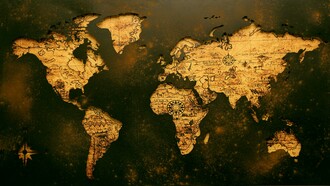Conflicts have always been part of interpersonal relationships, of our society. Not only they question the existing orders (in most cases by causing a lot of suffering), but they also give impulses for social and personal development, which is why they can be considered an inevitable, and above all necessary, part of life. When we are confronted with conflicts, we take risks, leave our comfort zone and discover new things, and even though we often cannot choose what conflicts to face throughout our lives, what we can always choose is the way we want to deal with them. Do we want to display our anger by behaving violently or maybe act in a more civilized way by following, for example, the practice of non-violence?
Non-violence can be described as a form of socio-political practice based on a whole set of strategies. The concept of non-violence, like many others, has many meanings and is subject to many interpretations, as it is not only a mental construct, but above all a social one. For this reason, it is often associated with myths and falsehoods in unfavorable contexts. One of these myths is that non-violence is a utopia, something unattainable, a concept that runs completely counter to realism. A second myth concerns its association with the concept of passivity. This association arose after the emergence of the concept of "passive resistance" at the beginning of the 19th century, which indicated a "stubborn refusal to cooperate with or obey persons or institutions in power." Originally, this concept was associated with non-action, in contrast to "active resistance", which was mainly associated with action. Nowadays, "active resistance" means something similar to non-violent action, but it is still strongly associated with the concept of passivity, which is understood as non-action, weakness, discouragement and enduring injustice. Very often, non-violence is also understood as socio-political powerlessness, which is characteristic of people without power. But what exactly it is meant by power?
A simple definition of power could be "the power to do something", the dominion and influence one has over another or over a thing. It is tenacity, strength or the ability to produce certain effects, as well as possibility, creative energy. Power can be seen as the action of our freedom, which tends to liberate us. There are many forms of power, and they are all distributed differently among the different groups and individuals in a society, who in turn have a different relationship to them. This relationship can be traced back to psychological and ideological factors that lead to certain social groups having a stronger inclination towards obedience, submission and faith, while others are more inclined towards resistance, rebellion and disobedience.
Anyway, if non-violence does not represent all this, what is it then?
For Gandhi, one of the greatest advocates of non-violence and pacifism, non-violence was synonymous with the concept of ahisma, which means "do not kill", "cause no harm and no suffering", an ethical principle enshrined in Buddhism, Hinduism and Jainism. Martin Luther King Jr. referred to it directly as the "power of love", trust in humanity and the instrument of redemption and salvation. For him, non-violence "avoids not only external physical violence but also internal violence of spirit. The non-violent resister not only refuses to shoot his opponent, but he also refuses to hate him". Finally, Aldo Capitini, philosopher and professor at the University of Perugia, as well as an expert on non-violence, spoke of it as a "form of permanent rebellion" and as the "government of all". He believed that non-violence in its political version is a government in which no one uses violence but reason.
These definitions allow us to understand non-violence as strength, justice, rebellion, energy, love… and offer a wide variety of interpretations: non-violence understood as a method of intervention in conflicts and thus as a set of procedures and techniques that enable certain conflicts to be managed, transformed and resolved; non-violence as a method of (socio-political) struggle that aims to open the doors to compromise and constructive work with the opponent; non-violence as a humanization of politics; non-violence as a path of introspection and personal research practiced by many activists and spiritualists such as Gandhi, Lanza del Vasto and the Dalai Lama; non-violence as a philosophy and cosmic vision of the human being, in which humanity opens itself to change and transformation; non-violence as the opposite of physical or direct violence, understood as the use of brute force that causes harm and suffering and, in the worst case, death; non-violence as the opposite of cultural violence, expressed in symbols, religion, language, art, ideology, science, etc., which serve to justify and legitimize the use of direct violence or the existence of structural violence. By the latter is meant violence that manifests itself through the system, in the socio-political structures that impede the realization of the person as such or prevent the satisfaction of basic human needs.
Considering the above, it is clear that the concepts of power and politics are very closely linked, as both are activities on which social life is based. How we judge our own actions and those of others depends on what we understand by politics, how it exercises power and how violence is used in this context. This should make us realize that there is a relationship between (non-)violence and power. First of all, the principle of non-violence is that (political) power – which depends on our ability and talent to analyze and interpret reality – can actually be controlled from the bottom up. In this context, it is very important to introduce the concept of democracy. In a democratic system, in fact, there is a greater likelihood that conflict concepts based on non-violence will develop, especially when democracy fully respects their basic characteristics such as consensus, pact and agreement, understanding, transparency, fair play, political pluralism and tolerance. Shortly, non-violence keeps democracy and civic participation alive.
Another important aspect that we must not forget is that while non-violence waives the use of violence, it does not renounce the use of politics. It is merely another (brutality-free) form of conflict resolution. Aldo Capitini himself, in his book "Scritti sulla nonviolenza", wrote that violence is not a simple form of pacifist action, but an action that opens and exposes the conflict as it is and tries to influence it to transform it and de-escalate it from its violence through tension. He adds that it is a mistake to equate non-violence with peace, order, work and calm. For him non-violence is “the literal and symmetrical opposite of war: It is itself war, a constant struggle against circumstances, existing laws, the habitual, against one's own mind and subconscious, against fear and desperate violence. Non-violence means being ready to see the chaos in our surroundings, the social disorder, the arrogance of the bad guys, it means being ahead of a stormy situation". Through discipline and certain strategic rules, non-violence strengthens the actors and prepares them for struggle. For this very reason, it can also be seen as a mental behavior, a way of life that encourages those who choose to actively resist conflict.
On a societal level, non-violence is implemented through various techniques and methods that create alternatives to armed struggle. The application of these methods is called "non-violent political action". Many of these methods, which were used in social emancipation and resistance struggles, have even become characteristic of non-violent action such as strikes, boycotts, protest demonstrations, tax refusals, etc. In addition, there are others to which a more ethical-political meaning is attached, such as non-collaboration, civil disobedience and non-violent direct action. All these methods taken together represent forms of radical struggle that, thanks to people's capacity for self-sacrifice, aim to oppose injustice in a completely effective and ethical way based on honesty and fairness.















